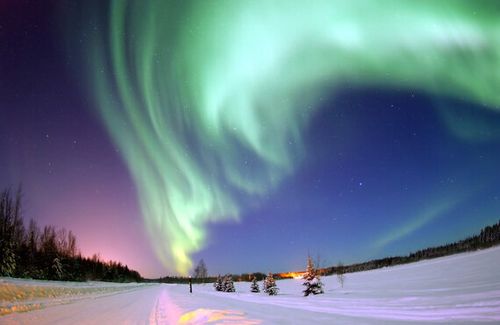Seeing the northern lights is high up on many bucket lists, and as the only natural light display in the world it's not hard to see why. Every year thousands of people travel to Iceland, Sweden, Finland, Norway and Canada for a chance to witness the one of the seven natural Wonders of the World, the spectacular aurora borealis.
In March I visited Abisko in Northern Sweden and was lucky enough to witness the light show for myself. Magnificent, mysterious, mesmerising - the aurora truly is deserving of every hyperbole and cliché that comes its way, but while northern lights holidays are becoming increasingly popular, and enjoying the stark, haunting beauty of the Arctic is a given, actually seeing the lights is by no means guaranteed.
If anyone is thinking of travelling to the Northern hemisphere, I would urge them to do so, but first it's essential to do your research. There are several steps you can take to create an unforgettable Arctic trip and minimise your chances of a disappointing northern lights no-show.


In my non-expert opinion the most important piece of advice that anyone can take with them is this: don't go for the northern lights; go for the destination. It doesn't matter how much you plan and prepare or how long you spend choosing your destination and dates: aurora borealis doesn't care. The utter unpredictability of the northern lights is partly what makes them so special. As a natural phenomenon we have no control over it.
Accepting and understanding that you may not glimpse the northern lights is key to enjoying an Arctic holiday, because this exceptional region has so much more to offer. Whichever country you choose to visit, the range of activities on offer are varied, exciting, and a world away from the usual holiday pursuits.
In Sweden you can visit the famous Ice Hotel, go snowmobiling, ice-driving and husky mushing right out into the eerie silver wilderness; in Iceland you can spot orca pods, admire volcanoes, waterfalls, glaciers and bathe in lagoons; in Norway you can explore the beautiful Lofoten Islands and Hurtigruten coast, and witness the vast open skies of the North Cape, breath-taking without or without the accompanying lights.
The point is that there is such remarkable natural beauty in Scandinavia that it discredits this wonderful region to come only for the lights. Having said that, seeing the northern lights is understandably the stimulus for most trips, so how can you maximise your chances of seeing it?
The aurora borealis is visible from around 6pm to 6am from late September to March. You need a clear, dark night to see the lights, so for this reason you need to be as far away from built-up areas and light pollution as possible. Don't be tempted by cheap offers of city breaks in Stockholm or Reykjavik with "chances to see the lights" - chances are you won't. The more remote you are, the better your chances are and the more impressive the display will be too.
Many hotels will offer to wake you up in the night if the lights appear and you should definitely take advantage of this. On our third night we were awoke by our guide just after 2am. On the horizon far in front of us was a dim green glow which gradually advanced towards us. It's hard to explain just how enthralling a green wisp in the sky can be, but watching as it danced and flickered across the night is something I won't ever forget.
I stayed in the Abisko Mountain Station (where there are two decent hostels for tourists on a tighter budget) but I couldn't pass up the chance to spend one night in the famous Ice Hotel nearby. Known for being the world's first and largest hotel built of snow and ice, the hotel is constructed in November, opens in December and then by mid-April begins to slowly dissipate and melt away.
The images most people have seen of the Ice Hotel are the remarkable, intricate ice carvings and the huge snow-block beds linked with expensive and luxurious furs. As you can imagine the price for staying in such accommodation doesn't come cheap, but I stayed in one of the simpler snow rooms. Staying in a room carved out of "snice" (a blend of snow and ice) is such a bizarre yet brilliant experience that if anyone is this area of Northern Sweden it's definitely worth trying to spend at least one night in this ethereal environment.
With winter sightings of the northern lights predicted to be just as successful as last year due to the continued surge in solar activity there's never been a better time to visit the fringe of the northern hemisphere. Whether you get to tick something off your bucket list at the end will remain to be seen, but you can bet an arctic adventure is like nothing you've experienced before.
